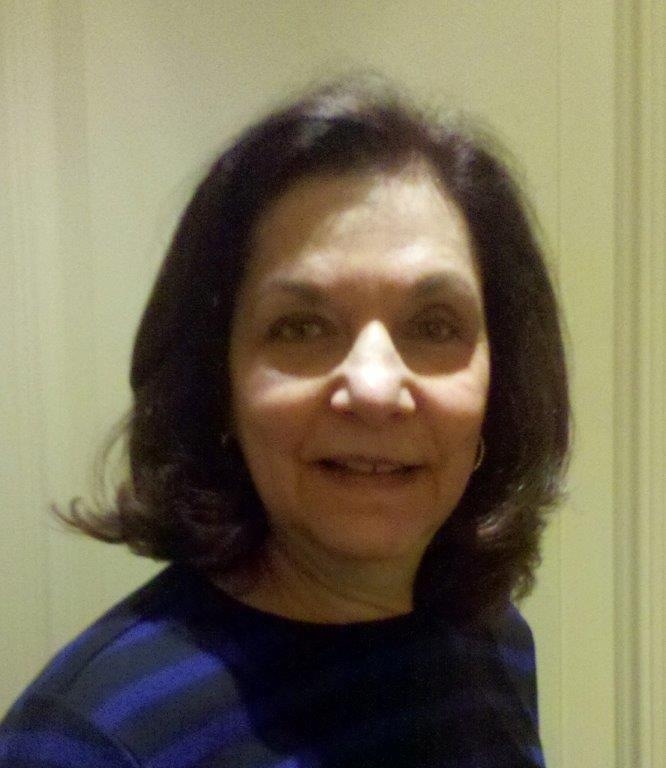
Migraines rank in the top 20 of the world’s most disabling medical illnesses. This prevalent, but mysterious disease sparked the inspiration for Cathy Glaser, President, Migraine Research Foundation (MRF), to bring awareness and help fund migraine research. In support of June Migraine Awareness Month, Repêchage has partnered with MRF raise money while doing what we do best, pamper people! Repêchage Sweet Relief, a new treatment that includes a head and face lymphatic massage, is being offered at numerous spa events in June with a percentage of proceeds going to MRF. In the spirit of Migraine Awareness Month Cathy Glaser shared some very interesting information about migraines with me that I would love to share it with you!
LS: How did the Migraine Research Foundation come to be?
CG: This is a good story actually. First, for a bit of background, both my husband and I suffer from migraines, being that it is a genetic disease it was highly likely that our daughter would have it as well. If one parent has migraines, there is a 40% percent chance that the child will have them; if both parents have it them there is a 99% chance. Naturally, our daughter was diagnosed with migraines at age 2, which started the journey to get her proper treatment, and would ultimately lead to the creation of the Migraine Research Foundation. So, as my daughter got older, she developed chronic migraines, which means she suffers from the disease more times a month than not and by the time she was a teenager we had been in and out of emergency rooms because her symptoms had become so debilitating. With little success of finding relief for her, my husband and I took her to an in-patient program in Michigan, and this is where we realized that migraines are a bigger problem that affects families everywhere. While at the in-patient program, about 7 – 8 years ago, we were talking with the head of the unit about volunteering and donating to an organization that was researching migraines and he said that there were no organizations that did this, which was astonishing. So we did some digging around and found that there was truly no research or funding for treatments and awareness of migraines. So we decided to start our own non-profit, MRF, to fund much needed research.
LS: What demographics are mainly affected by migraines and what are some of the symptoms and struggles they face?
CG: 10% of the population, including children are affected by migraines. 10% of school age children suffer, mostly non-diagnosed, partly because their symptoms don’t appear the way adult symptoms appear, like a headache. Migraine symptoms are actually a collection of neurological issues; for example, my daughter didn’t have head pain until 6-7 years of age, but would have very bad stomach issues and vomit, similar to the flu, but the symptoms were not consistent, just occasional. A doctor figured out she was mostly getting sick after car rides, meaning she suffered from motion sickness and most migraine suffers experience motion sickness. Being that symptoms are often difficult to link to migraines, studies show that only half of suffers are actually diagnosed and the rest are self diagnosed, which can be dangerous if they are self-medicating.
As for how genders play a role, more boys than girls are diagnosed with migraines before puberty, then as adults we see three times the amount of women compared to men are affected; one in four women suffer. In spite of prevalence, we still don’t know what causes migraines and treatments only alleviate symptoms. Right now there are more than 100 alleviating treatments available. Treatments fall into three categories that can be helpful to many different people with all different types of migraine symptoms: 1.) Preventive, which are prescription medications that are taken daily, 2.) Abortive, which are prescription medications that are used when a sufferer feels that symptoms may be appearing, and 3.) Complimentary, which are relaxation and meditation practices that can be helpful to individuals that are not able to take medication.
LS: What research and information about migraine is currently available to the public?
CG: There is a lot of information available to public, but it is not all current or correct; some information is dated and inaccurate. It is talked about in the press and media often, but you have to be careful where you get your information. And there are many types of treatments that are spoken about that may not apply to all suffers. Genetics and environmental factors play a big roll, but food triggers are discussed more often because they are easy to talk about, but these are not the only causes of migraine, which people should understand, so just because you eliminate a food it doesn’t mean it will stop the disease because there are other factors.
MRF is very committed to transparency so every grant we fund is on our website and explained and we publish a final research report, so these reports are great resources for current research on a variety of migraine research. Also, we post information daily on our Facebook and people can join our mailing list for even more information.
LS: How are the members of the Medical Advisory Board who review the requests for proposals selected?
CG: We worked with the now head of the MRF board, and asked him who are the key players in the field and he put together a list, and we invited them to participate. We then put together the group of doctors and scientists that currently comprise MRF. They are not paid; they do this because they believe in the cause and feel that this research could change the world. We have expanded the board once because we were getting a lot of clinical proposals relating to children and there are experts on migraines at the Cincinnati Children’s Hospital that were able to help with research.
LS: How has the research that MRF has funded helped further the information and treatment available pertain to migraine?
CG: We fund seed grants; these are small, innovation grants, for about one year. We look for out-of the box, proof-of-concept proposals. Most big funders require proof-of-concept, so researchers need to conduct an initial study that shows a hypothesis and that the end point makes sense. The initial research will show that the researchers are able to prove what they are setting out to prove. So after researchers start their studies with our funding they are able to approach bigger funders to take their research to the next level. We are the first step in getting research in motion.
LS: Can you tell me about any research that is currently being done?
CG: I’m very excited about a study that is currently being done for potential new treatment targets for migraine. Since we don’t know what develops migraines, researchers are using many off label prescriptions, like high blood pressure, anti-depressant and anti-seizures medications that are not approved for migraines yet. Researchers are looking at potential new targets, which are in the very preliminary stages, and if even one is successful we could break a barrier and find new treatments.
As for past research, through 2012, we have had 33 grants and we just opened the requests for proposals (RFPs) process of this year. We send out RFPs all over the world, we fund internationally as well, they come up with the idea and we have our advisory board review and then we make the final decision. We are currently soliciting grants until August and once the studies are done the final reports are on our website.
LS: What are some of the main initiatives that MRF participates in to bring awareness to migraine?
CG: Our social media tools are a big part of getting the word out. We are very active in posting articles and information daily on Facebook. I do interviews, like this one, to help get information out into the public. We also work as charity partners, with companies like Repêchage, and we have worked with the New York Marathon, to expand our reach. We hope to do more of this partnering in the future.
LS: How do you think migraine suffers will respond to the spa & salon events being organized by MRF and Repêchage?
CG: We are very hopeful that they will come in droves! We haven’t done an event like this before so we’re very excited. Since so many women suffer from migraine, this will be great event that will allow them to relax and be pampered while bringing more awareness.
LS: What advice or tips would you offer to migraine suffers?
CG: Since we can’t cure migraine many suffers become discouraged, but there are over 100 treatments. I would advise them to not self treat, find a qualified doctor that can treat you. Half of suffers are not diagnosed. Many take pain medications that are prescribed for other aliments and this can be dangerous. Find a good doctor and stick with them so you can find a treatment that works for you. We actually offer a proprietary list of migraine specialists that includes over 400 headache specialists in the US. And we also have a list of doctors that just treat children that suffer from this disease. I would also tell suffers to not give up. There are many treatments; you must be persistent until you find one that works. And take care of yourself, exercise, eat and sleep regular, listen to your body, and avoid triggers if you know them.
LS: Where do you hope MRF will be in ten years?
CG: We hope we’ll be out of business, because the problem will be solved! Likely that will not happen in ten years, but you never know what’s around the corner! We just really hope to start up a grassroots movement that will garner awareness and help with research and treatment. With 36 million people suffering, if everyone just gave a dollar we would have a lot of funding. We want to see more sufferers helping themselves and being advocates so that more research can be done. I want more people involved and trying to solve the problem.
To show your support and make your appointment for Repêchage “Sweet Relief,” please visit the Repêchage Spa Events page to locate a participating spa near you!

Dear Lisa,
I am so happy to hear that you enjoyed the article! We will be in touch with more information.
Cheers!
Lydia Sarfati